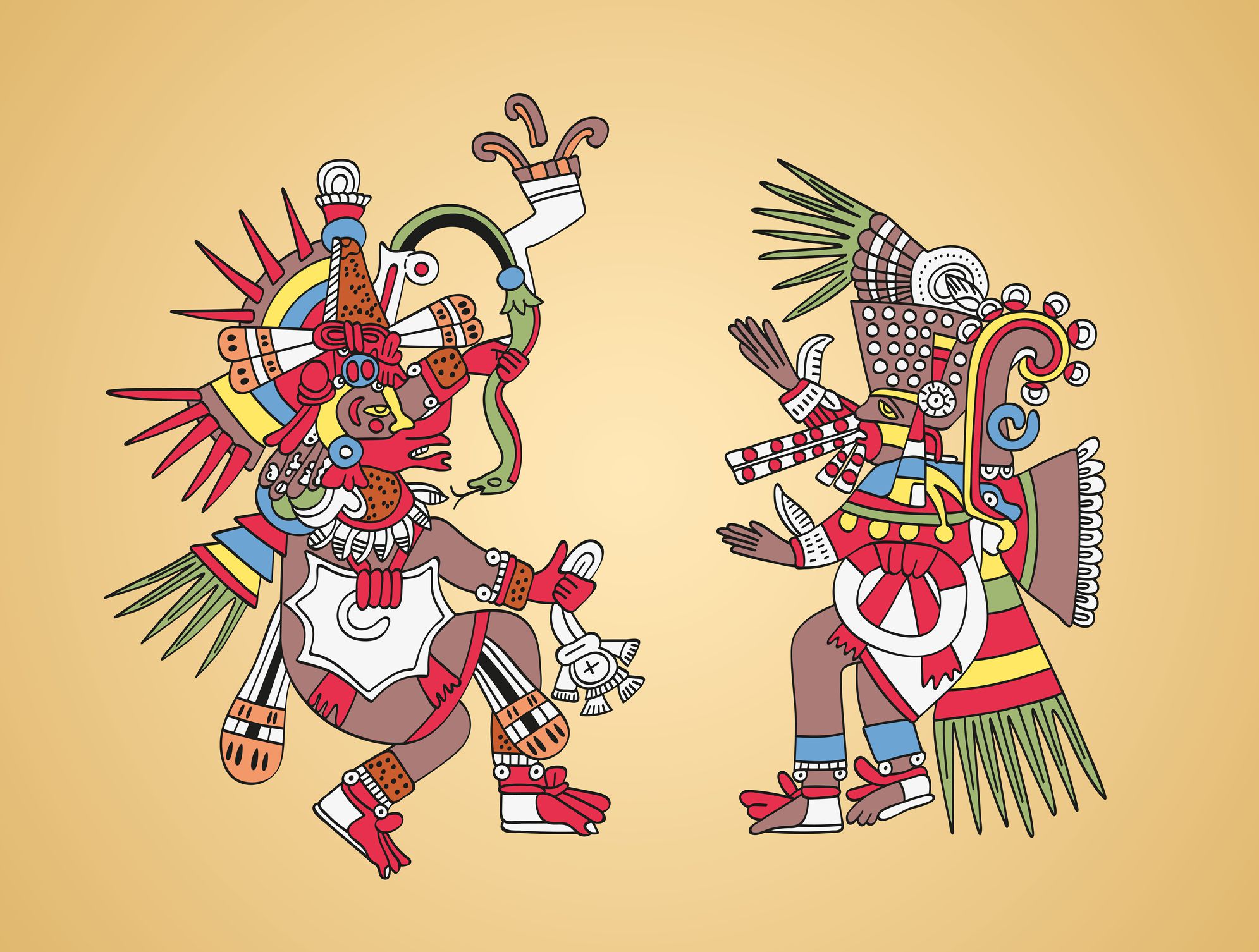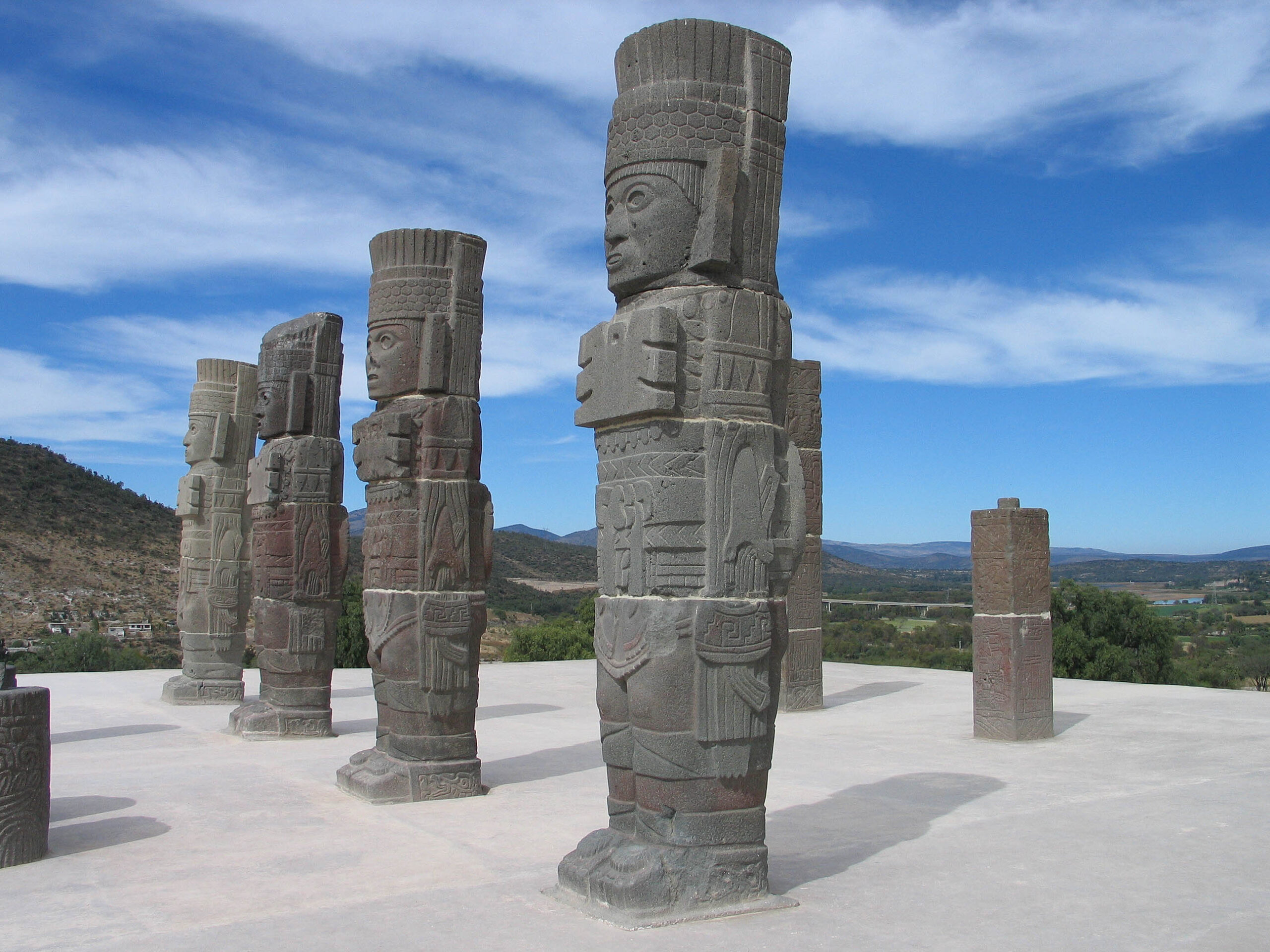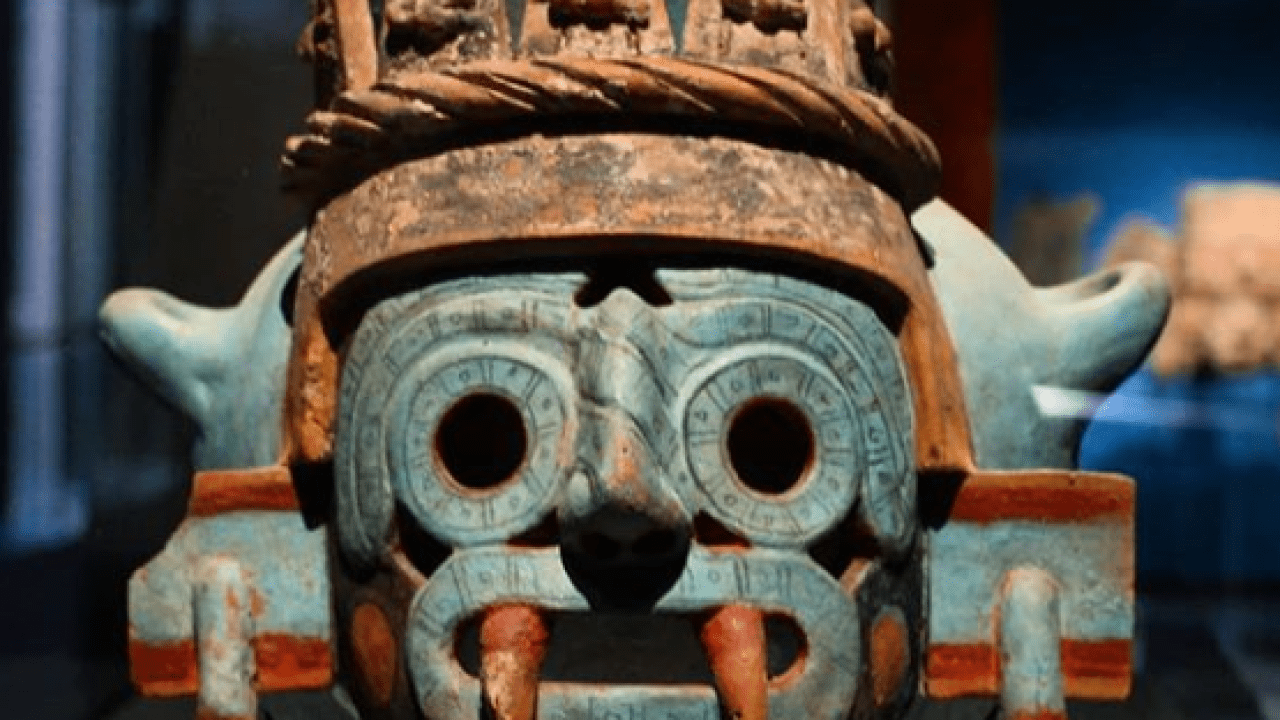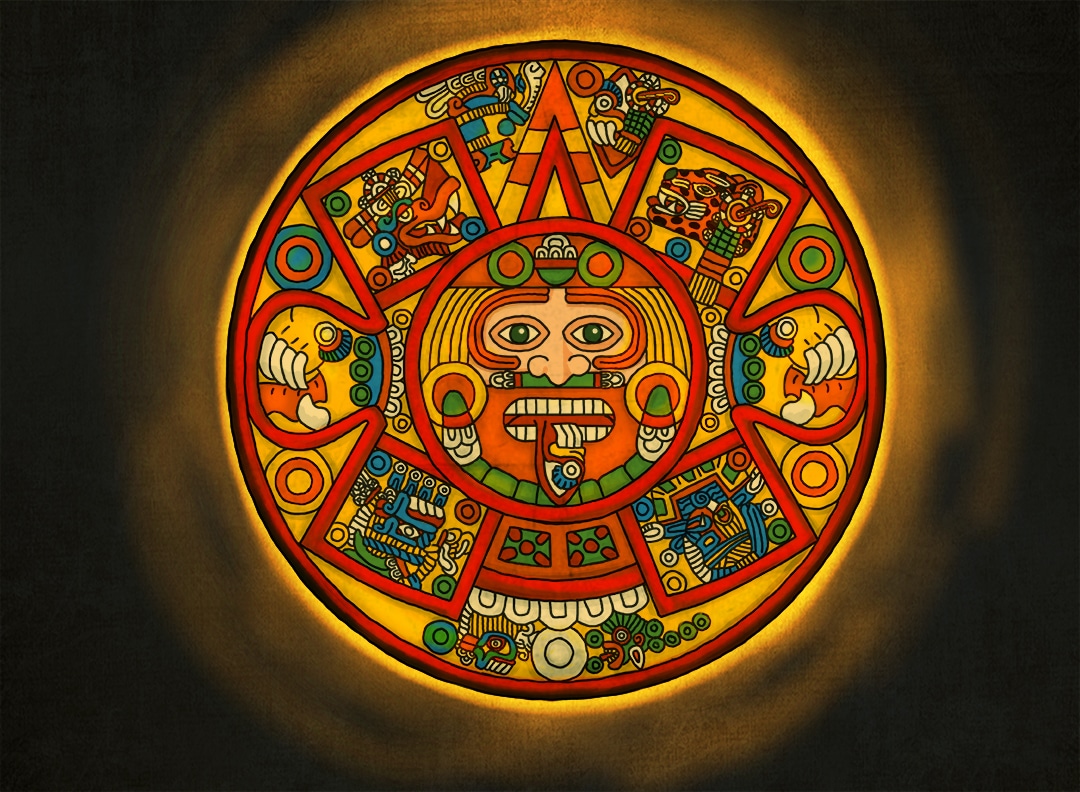The Toltec culture was one of the first great civilizations of Mesoamerica that existed, therefore, one of the ones that has given the most contributions to the Latin American region, including its mythology. For this reason, today we want to talk about what are the main Gods of the Toltecs and its relevant characteristics. Stay with us, and let's all learn about this influential society together!

Who were the Toltecs?
Although many are not aware of it, the Toltecs were part of one of the civilizations with the most cultural significance that developed in the ancient region of the American continent, Mesoamerica. This had its peak in the Postclassic Period of humanity, specifically between the years 950 AD. C. and 1150 d. C (XNUMXth and XNUMXth centuries AD).
The area where they lived, exerted and still exerts today, a relevant influence in other areas, very similar to the one that a few years later caused the Aztecs. The Toltecs settled in the Central Plateau of Mexico, a territory that currently encompasses the states of Tlaxcala, Hidalgo, Mexico City, the State of Mexico, Morelos, and Puebla. However, its main centers of progress were the cities of Huapalcalco and Tollan-Xicocotitlan.
According to countless historical records, although they were a nomadic people, they began their pilgrimage from the north of the region in 511 AD. C. until they founded the capital of Tula, around 800 AD. C. They lasted there, approximately more than three centuries until the arrival of the Aztecs.
The economy of the geographical area was centered on agriculture, especially the cultivation of corn and beans. The organizational structure of their society was divided into two groups: the privileged class, among which we find soldiers, hierarchs, public officials and priests; and the servile class, which basically consisted of artisans and laborers.
His belief system had a notable impact on areas of Yucatan and Zacatecas. In addition to the myths, architecture and other types of fine art are added to his cultural legacy. The gods that surround this intriguing culture became an inherent part of the Mesoamerican people.
Like much of the pre-Columbian civilizations, they had a powerful mythological imprint, which means that they had a large pantheon of gods who interfered in everyday events. Religion was considered shamanic, that is, original practices that ensured that some people have the ability to diagnose and cure human suffering.
In general, they worshiped deities that were elements of nature, such as: the sky, the water and the earth. These conceived the divinity in a rather peculiar way, since it was dual, their two primary gods were Quetzalcóatl (creator of the world) and Tezcatlipoca (creator of darkness and destruction).
The priests, also called shamans, practiced communion with their gods based on human sacrifices. Such offerings were made part of the ceremonies, because it was believed that the deities required them to be able to provide them with blessings.
Although this characteristic of their society is controversial for many in modernity, at that time it was extremely normal to organize ball games in which it was determined, depending on who was the loser, who was the person who would be sacrificed in the name of the Almighty .
Other documents that date back to this period suggest that the Toltecs chose their gods without much thought, they did not pay attention to where they came from or if they had real truth regarding their powers. These asserts that it is simply a town that was anxious to find spiritual guides to help them in their daily needs and requirements.
The religious beliefs that they possessed were based, as well as their own culture, on fights and confrontations, the most common is that they were between the duals that we previously mentioned. For them, the universe could not function correctly without wars or combats occurring, therefore, each of their divinities had well-established characteristics of warriors together with fierce and dangerous personalities.
A good part of the traditions that are considered specific to the Toltecs, after the passage of time were adopted by various later indigenous populations, which is why it is common for beliefs to be shared with other civilizations, such as the Mayans, for example.
Main Gods of the Toltecs
As you may have already noticed, the Toltecs welcomed all the gods they heard about, a large number of them shared with other communities. In itself, it could be said that they have more than four hundred divinities, for this reason, we have selected the most outstanding. Among the main ones we get the following ten:
Quetzalcoatl
He is the primary god of the Toltec civilization, known as the plumed serpent. Because he is conceived as a supreme being, he incorporates in his qualities the ability to generate all kinds of teachings to man. In addition to this, he is full of endless spiritual principles.
Quetzalcóatl appears in most of the pantheons of Mesoamerican cultures, which makes him a key figure in maintaining a stable relationship between each of the religious thoughts possessed by the different groups that occupy the area. He is credited with the ability to provide the gift of knowledge, as well as other attributes such as fertility, creativity, light, and wisdom.
In the beginning, he was considered the patron of the day and of the winds. In fact, in the ancient legend of the five suns, it is related that Quetzalcóatl was the one who gave life to the fifth Sun, with which we live today, and together with Xólotl began the creation of humanity.
The name “feathered serpent” is due to the fact that it comes from the Nahuatl language, “"quetzali" means* pen and «coatl» snake. Additionally, it is referred to in such a way because of its material physical aspect. He is the primary person in charge of the cycle of life, as well as the end of it. He has a dual character, since he is the antagonistic twin brother of Tezcatlipoca.
tezcatlipoca
It represents the other side of duality, that is, the equivalent of Quetzalcoatl. Tezcatlipoca is directly related to heaven and earth, but also to darkness and night. He is a warrior-tempered god and antagonist, often referred to as *"dark smoking mirror" or "stained mirror". He is omnipresent, which allows him to observe absolutely everything and easily annihilate each of his enemies.
As a consequence of its destructive function, it was famous for being the darkest deity of all those that make up the pantheon of the Toltec culture, its figure was often used to frighten children. However, thanks to the fact that he was also a sorcerer and prodigy soothsayer in terms of black magic, he participated with his twin brother in the creation of man. In the same way, he has never ceased to be branded as a source of life and protection of the destiny of the human being.
centeotl
It is a deity that is closely related to the virtue of duality, since it has both a male and a female version. Depending on his convenience, he changes his appearance, since in this way he can be patron in all the rituals and celebrations that are carried out.
At that time, it was quite common for a god of corn to exist in Mesoamerican mythologies, the Toltec was no exception. This is because it was the predominant crop in the region, therefore, Centéotl was the most important deity. Likewise, he was sometimes established as the patron saint of happiness and drunkenness.
Tláloc
The title of the god of rain and water corresponds to Tlaloc. For this reason, one of the most important, revered and, above all, feared, since the key sector of the Toltec economy, agriculture, depended on it. Regularly, the settlers made sacrifices to Tlaloc as an offering to make it rain on their crops and grant them the gift of fertile land. It was believed that when this god was upset he sent thunder and storms to earth.
The tributes that were paid to him were carried out the first month of the year in caves with streams or streams of calm water, all in order to guarantee a prosperous annual flowering. His name comes from the Nahuatl language, possibly from «tlāl» which means earth and -oc which is the one that rests or remains reclined, which implies as a final definition "the one that lies or rests on the ground" or less frequently, "the nectar of the earth".
Xochiquetzal
Xochiquétzal is the clear representation of the goddess of love, beauty, and pleasures. Likewise, she is believed to be the deity of youth, flowers and the arts, her existence is intrinsically related to fertility and the magnificent abundance of nature in a place.
Within Toltec mythology there is a story that asserts that this divinity was the wife of Tlaloc, and a couple of other various gods. She is usually associated with symbols referring to the lofty and the extensive world of seduction and femininity. To venerate her, altars were made with cempasuchil flowers and thus obtain her grace.
Mixcoatl
The god and patron of hunters is Mixcóatl, also known as Camaxtli. Before going out daily to hunt, the Toltecs entrusted themselves to this deity to be brave and capable of returning with enormous prey for their families. In some historical texts, Mixcóatl is portrayed as the god of war of this culture, although such an affirmation is quite common, since in the belief of him an infinity of deities have the secondary quality of being a warrior.
He is a god that is very fascinating for his followers, even in some areas of the territory his cult was tied to that of the Milky Way, this being a kind of representation of it and, therefore, reaffirming the extensive knowledge that the Toltecs possessed. of the universe.
itztlacoliuhqui
Disasters and human misery are attributed to Itztlacoliuhqui, this is one of the dark gods of the Toltec pantheon. He is patron of cold, ice, winter, punishment and sin. Thanks to his dark relationship with all of the above, the tributes paid to him included many sacrifices and knives.
As a result of his dispute with the Sun, he was forever associated with low temperatures. He is the worthy representative of justice and of those instruments made with obsidian. On certain occasions, he was one of the divinities that made up the jury of the trials, as well as the one in charge of the punishments.
Xipe Tótec
Xipe Tótec is the deity of life, death, and agriculture. He is famous for a legend in which it is related that he tore off his own skin to provide food for those in need. In a few others, it is argued that his death and taking off his skin was what caused the corn crop to prosper.
One of his nicknames is that of the almighty god of gold workers, described in texts as a superior and bloodthirsty being who demanded constant sacrifices to ensure the safety and prosperity of the land. For this reason, he is considered a cruel and ruthless god, since if he did not make sacrifices, the village would not have riches. So much was the morbidity of the situation, that the priests dressed with the torn skin and had to dance to please him.
tonacatecuhtli
In the original language of Nahuatl, Tonacatecuhtli could be defined as the lord of sustenance ("tonacayotl", support; «tecuhtli", Sir). It is that source that supplies the people with food, it is considered one of the creator gods of everything and the greatest exponent of nature and fertility.
It is quite common to see his veneration throughout the Mesoamerican region, even as one of the central divinities of the pantheon, only in a different way in each place. According to countless accounts, Tonacatecuhtli was responsible for dividing the land and the ocean, which were initially together. Although Omecihuatl and Ometecuhtli are the creators of life, he was the one who gave them life and created the entire planet.
Historical records assure that Tonacacihuatl was his wife, whose title also refers to "Lady of Our Meat or Sustenance". Both have great popularity because they are a symbol of kindness and brotherly spirit. Her companion is often confused with other goddesses such as Citlalicue and Xochiquétzal.
Ehecatl
Ehécatl is the Toltec deity associated with the wind as its main attribute, and one of the first to emerge in that culture. This is because the four essential elements that make up the Mesoamerican civilizations were air, earth, fire and water, each guaranteeing to cover the primary needs of the area. Its existence was very important to be able to understand the climatic changes that occurred.
He played a transcendental role in the creation of the earth according to the mythology of the Toltecs. In fact, he was he who made possible through the use of his breath, the movement of the sun and the arrival of the rain. For this reason, he is always linked to Tlaloc, the god of rain. The close relationship between the two natural phenomena often causes them to occur simultaneously.
For a better understanding of the subject, around the beginning of the Fifth Sun, the present according to his beliefs, Ehécatl blew on Nanahuatzin (god of light) and Tecciztécatl (god of the Moon) after they were thrown into a bonfire to become the stars that will illuminate the earth later. As a result of the winds that were provided, both began to move in everyday life. Such a myth can be observed in the calendrical denomination of the era, which is "Four Movements".
Therefore, Ehécatl received the same sacrifices that were offered to the rest of the pre-Columbian gods. By blowing, he also provided life to what was newly created. When he fell in love with the beautiful maguey goddess, Mayahuel, he gave human beings the gift of being able to love.
In general, he was a calm and peaceful god, who at the same time functioned as a clear symbol of impetus and courage. This disposes as proper aspects to the four directions, that is, the four sources of the winds. The Toltec people represented him as a black god wearing a pointed mask, which around his neck wore a necklace with a mollusk shell from which the whistling of the wind came. In addition to this, he was always shown to them with a red beak with which he cleared the path of Tlaloc.
General characteristics of the Toltec religion
As you have already realized, the Toltec religion or mythology has a series of quite marked characteristics that are of great help when studying it. For this reason, we have compiled the following seven among the most important:
- Their religion is classified as polytheistic, which means that within the culture they pay tribute to and worship a varied set of divinities, not just one. The antagonistic concept of this belief is monotheism.
- The gods who acclaimed miracles were strongly related to mother nature and the elements that make it up, they were clear representations of the rain, the wind, the Sun, the Moon, etc.
- The main figures of the religious-social system were the so-called shamans, subjects similar to priests. These made predictions, invoked spirits and carried out healing practices through the use of occult powers and natural products. Sometimes, they also advised and guided people who came to their consultations.
- As in many other Mesoamerican civilizations, the vast majority of deities had a kind of remarkable duality, usually with roles that played between good and evil.
- To honor their gods in a proper way, they made extraordinary constructions of a formidable size. Among his greatest works are the Tlahuizcalpantecuhtli Temple and the Temple of the Warriors of Chichen Itza.
- Throughout their existence, the Toltecs believed that human lives seriously depended on the deities. Therefore, it was quite common for them to use human sacrifice to honor and communicate with them.
- Formal burials were governed under strict religious parameters. Both death and life were considered as something that was previously established in the calendar by the wishes of the gods.
If this article was to your liking, do not leave without first reading:





